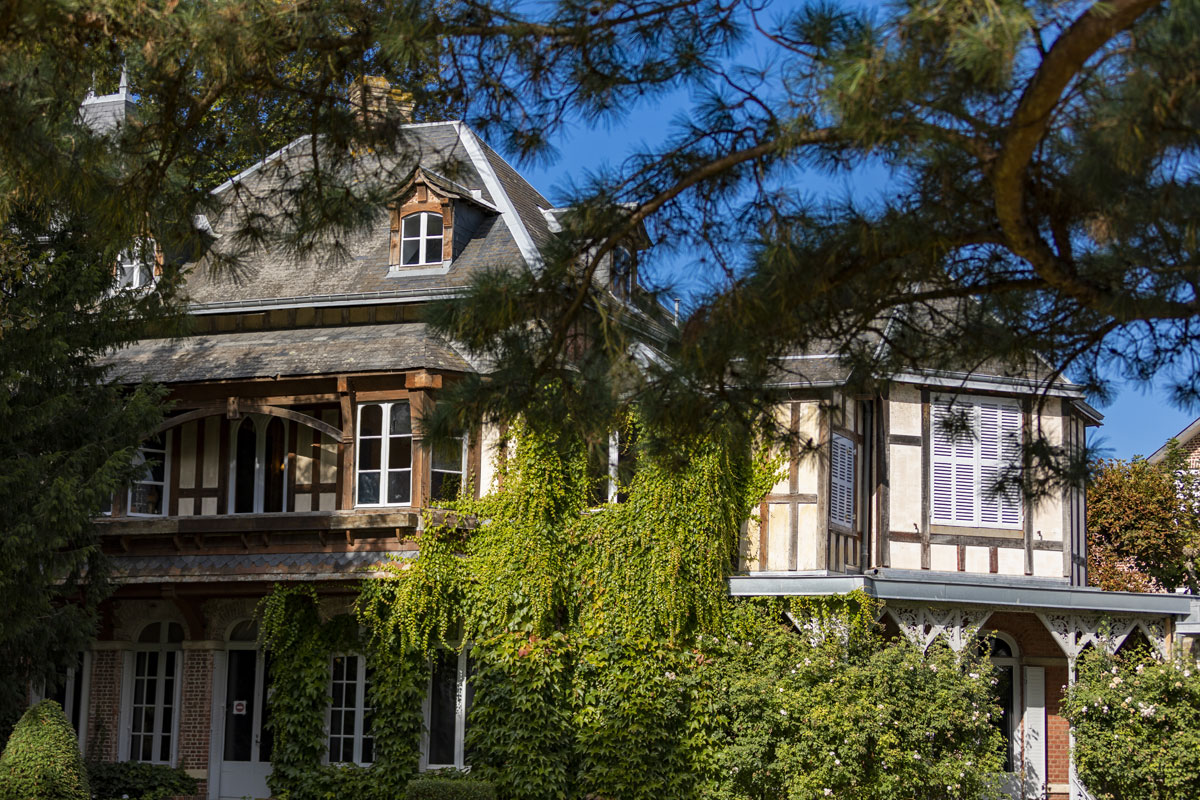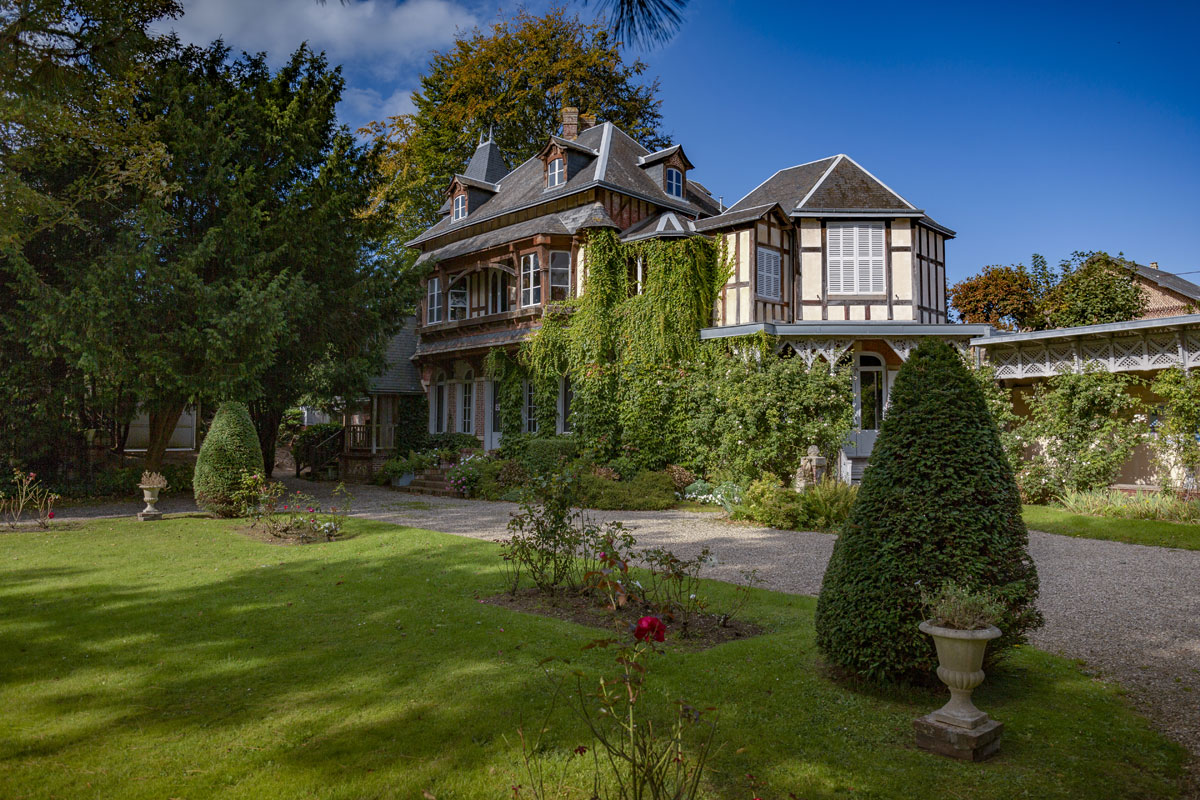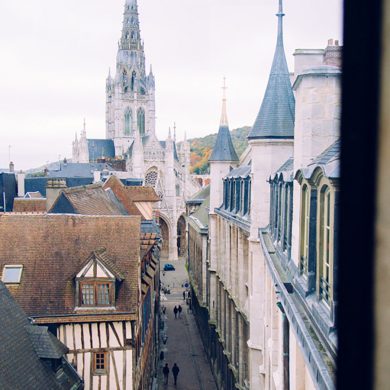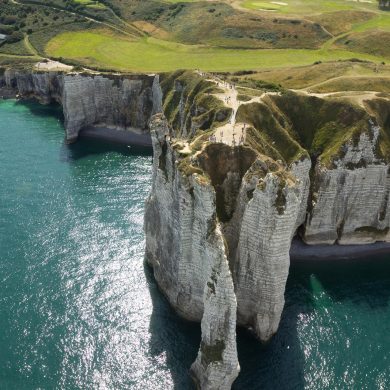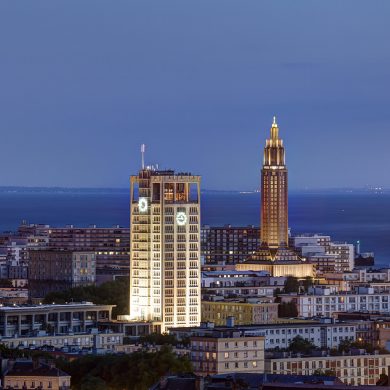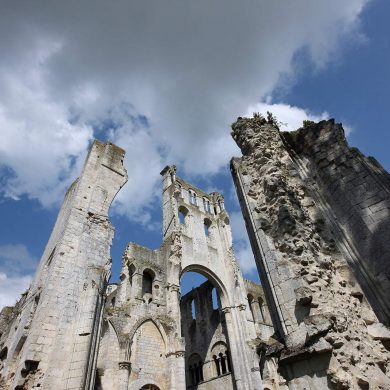Updated on 26 October 2021
Reading time: 6 minutes
Netflix’s Lupin is the streaming platform’s first French-language series to crack the US and UK Top 10, with our very own Etretat featuring prominently in the part 1 finale, but who exactly was the famous fictional gentleman burglar, who created him, and why were several of his stories set in Normandy?
You’ve watched the Netflix series, now you’re intrigued. Who was Maurice Leblanc, the author of the stories on which Lupin is based, which are referenced throughout the programme?
Maurice Leblanc was born in Rouen in 1864. Fascinated by legends of witches, Celts, Romans and the Vikings growing up, Leblanc would go on to develop a deep knowledge of and love for the region around Rouen, known as the Pays de Caux. After working in a factory in Rouen by day, writing only in his spare time, Leblanc eventually left his home town to study in Paris, where he then started working as a journalist for several publications including Le Figaro. Fate then struck, as publisher Pierre Lafitte launched the magazine Je sais tout and commissioned Leblanc to write a series of new crime stories where the hero would be a sort of French anti-Sherlock Holmes.

Who was the original Lupin? Not unlike Lupin in the TV series, the Arsène Lupin of the books was a thief, a master of disguise, a rascal but never a killer, a hit with the ladies and a righter of wrongs who takes from the rich, a French Robin Hood if you like. He takes on a multitude of personas in the books, constantly changing his looks and his name – examples include Prince Paul Sernine, Raoul d’Andrésy, Horace Velmont and Don Luis Perenna. In the series, this is echoed by Assane’s alter-egos Paul Sernine, Luis Perenna and Salvatore813, as well as his choice of name for his son, Raoul. Yet superman Lupin, both in the books and on screen, always manages to triumph somehow over his enemies, even when all seems lost, through bending the rules, outsmarting the police and sheer self-belief.
Will we be seeing more of Normandy in part 2 of Lupin? Although part 1 was set mainly in Paris, we did see Etretat feature towards the end of episode 5. Based on the parallels drawn between Leblanc’s first book The extraordinary adventures of Arsène Lupin and Lupin part 1, and the number of times Normandy featured in the books that followed, there’s every reason to hope the region will play a bigger role in part 2. Below we’ve put together a list of some of Leblanc’s most popular books that reference the region of his birth.
Places in Normandy that feature in the books
Naturally, Leblanc’s fond childhood memories of Normandy would feed into the scenarios he created for his protagonist, with several of Lupin’s adventures taking place in what Leblanc dubbed the ‘Cauchois triangle’, the area between the cities of Rouen, Le Havre and Dieppe. Leblanc also often ventures beyond reality, creating an alternate Normandy for his readers:
Arsène Lupin, Gentleman Burglar (1907): The Château de Malaquis is referenced in the second chapter, Arsène Lupin in prison, and was set next to the River Seine. There are also mentions of Rouen and Caudebec-en-Caux. The fourth chapter, The Mysterious Traveller, is set on a train to Rouen. The ninth chapter, Sherlock Holmes arrives too late, is set in the Pays de Caux, refers to the Paris-Le Havre train and features the Château de Thibermesnil, an actual 16th-century chateau near Dieppe.
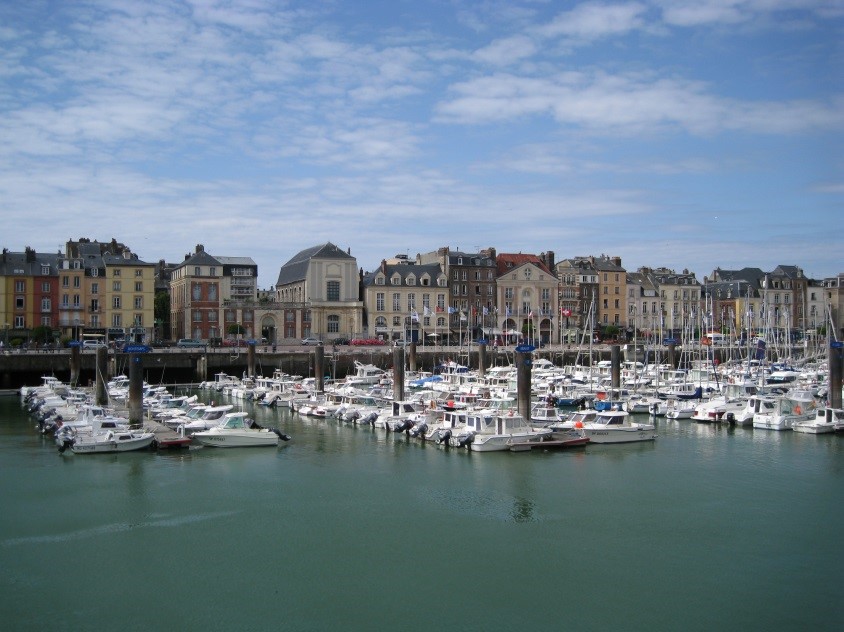
The Hollow Needle (1909): The book starts near Dieppe, on the cliffs between the villages of Sainte-Marguerite and Varengeville. The ‘hollow needle’ after which the book is named is a natural rock formation off the coast in Etretat, described it as housing the secret treasures of the Kings of France. The book ends at a real farm, Neuvillette, situated between Dieppe and Le Tréport. The Château de Malaquis features again in this book, heavily inspired by the chateaus of Tancarville (near Le Havre), Valmont (near Fécamp) and Dieppe, and sits next to the River Seine between Jumièges and Caudebec-en-Caux. The names of places and people throughout the book have been taken from real villages in this part of Normandy.
813 (1910): The Doudeville brothers who feature in this book are named after a village in the Pays de Caux. The fictional Château de Quevillon is also situated in the Cauchois triangle, by the River Seine.

The Countess of Cagliostro (1924): This book starts on the Alabaster Coast at the fictional Château de la Haie d´Etigne in the village of Bénouville, east of Etretat. The chateau is thought to be inspired by the real Château de Tancarville near Le Havre. Another famous place that features in this story is Jumièges Abbey, by the River Seine.
Arsène Lupin and the Barre-y-va Mystery(1931): In this book, Lupin is summoned to the Manoir de la Barre-y-va in Radicatel (near Le Havre) to solve a murder and uncover the ancient secret of a local river. Although Radicatel is a real place in the Pays de Caux, the manor house is thought to made up and named after the local tidal bore, known as labarre in the Cauchois dialect.
In the footsteps of Arsène Lupin
While the Arsène Lupin festival that features in episode 5 of Lupin might be a bit of a stretch, there’s no doubt that Etretat is a pilgrimage site for Lupin fans. Anyone who’s read Leblanc’s third novel, The Hollow Needle, will recognise Etretat’s stunning cliff formations, including the famous hollow needle, which hid ‘the most fabulous treasure ever imagined, a collection of queens’ dowries, pearls, rubies, sapphires and diamonds… the fortune of the Kings of France,’ accessible only by a secret passage.
Die-hard fans can visit Le Clos Arsène Lupin, Leblanc’s old home in Etretat, converted into a museum dedicated to the gentleman burglar, where they can follow an audio guide around the stunning villa and uncover secrets about Leblanc and Lupin along the way. Anyone who fancies a night in Etretat can also book a Lupin-themed stay at the Domaine Saint-Clair Le Donjon, which includes two cocktails, dinner, bed and breakfast, and a 45-minute escape game inspired by Maurice Leblanc’s mysteries.
